
Our beloved cats and dogs love playing outside just as much as we do and, just like us, they are susceptible to picking up the odd tick every now and again. Therefore, after your pet has finished playing outside, you should check them over thoroughly as ticks carry the nasty illness known as Lyme disease.
Dr. Lee Herold, from DoveLewis Emergency Animal Hospital, says: “Ideally, pets should be checked for ticks anytime they’ve been outside, especially if they’ve been out hiking or walking in wooded areas or tall grass. Over the past three decades, cases of Lyme disease have increased and spread across the U.S., meaning vigilance during spring, summer, and fall will be key to your pet’s health.”
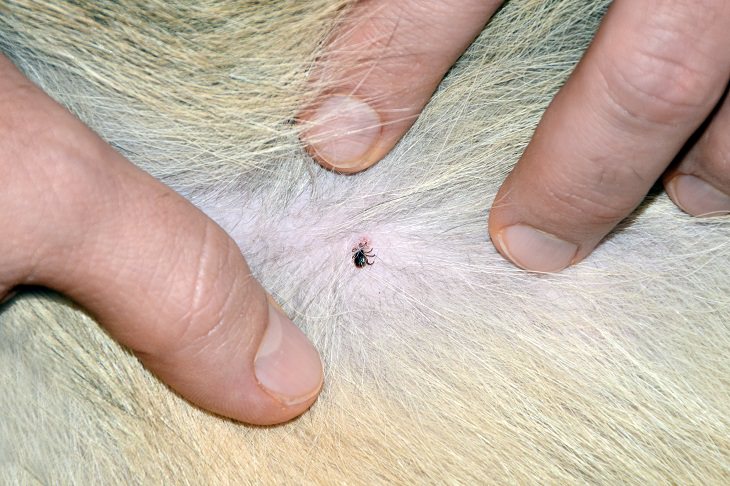
Ticks can hide in your pet’s fur, especially if they have a thick coat. To do a thorough check, run gloved-fingers over the top of their head and all over their body so that you can feel if there are any tiny bumps.
You will want to pay extra attention to the parts of your pet that generate the most heat as ticks love warm places. So, this means their tail, chin, face, between their toes, the inside of their ears, and armpits.
If you feel a bump, you’ll know it’s a tick feeding on your pet if you see a tick butt sticking out – it will usually be brown or black in color. If the tick is engorged with blood, it will be a light gray color. You should remove the tick immediately and dispose of it properly in order to keep you and your pets safe.
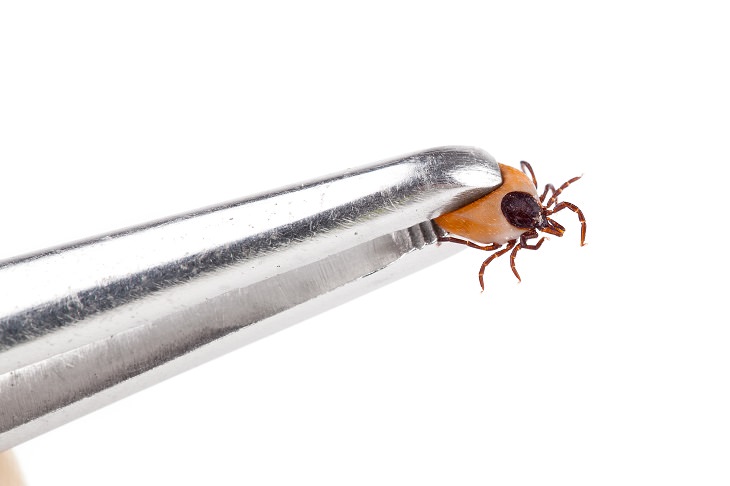
1. Put on a pair of gloves so that your skin does not come into contact with the tick. Next, take a pair of tweezers, hold them horizontally, and grab the tick up as close to your pet’s skin as you can without hurting your pet.
2. Pull the tick straight up and try to remove it in one swift motion. Try not to move, jerk, or twist the tweezers when you’re removing the tick as this could lead to parts of the tick being left in your pet.
3. Some people like to flush the tick down the toilet or burn it with a lighter once it has been removed. However, some vets recommend that you place the tick in a plastic baggie or clean empty pill bottle and bring it to your vet so that it can be identified and tested should your pet start to show signs of tick-borne illness.
4. Place some rubbing alcohol or iodine rinse on the bite to disinfect it.
N.B. If your pet starts to show lameness, lethargy, and loss of appetite, you should report it to your vet immediately.
Source: shareably
Images: depositphotos
 5:02
5:02
This Crow Has Got Some Attitude and We're Lovin' it!
Everything about this crow is human except the fact he's a crow. And yes, that DOES mean he's talking!
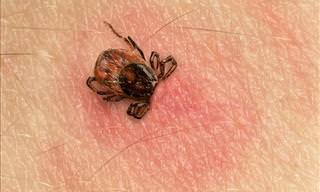
Lyme Disease: Symptoms, Treatments, and Prevention!
Lyme disease is spread by ticks. This is everything you need to know about this unpleasant disease.
 3:07
3:07
Cows are the Cutest, But This One is Something Special
He acts just like one of the family dogs! And the best part? They're all best buddies!
 3:53
3:53
Why Do Cats Like Catnip?
Are they really getting "high," or is there scientific logic behind cats' love of catnip?

16 of the Most GORGEOUS Bird Portraits You Will Ever See
Professional photographer Leila Jeffreys captures the diverse beauty of naturally colorful birds. Here are some of her best bird portraits.

9 Fun & Fascinating Facts About Beluga Whales
Beluga whales are more than just cute marine animals. Here are some playful facts about them.
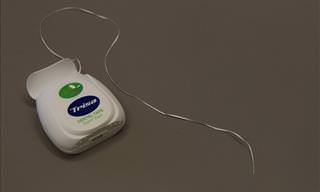
Dental Floss is VERY Versatile, Let Us Show You...
Most of us use floss just for flossing, however, you'll be surprised to find that it has 8 extra uses you need to know...

I Wish I Discovered The Uses of Castile Soap Sooner
If you haven't used Castile soap yet, these 10 reasons will convince you to do so.

8 Useful Tips That Will Help You Tame Your Anger!
Being angry takes its toll on your health and relationships. Therefore, this video will show you 8 great ways to keep your anger in check.

Keep Spiders Out of Your Home with This Helpful Guide
Here are nine effective ways to keep spiders out of your home:

8 Reasons Why You Should Always Have Shower Caps Handy!
Shower caps are a lot more useful than you could ever imagine. Take a look!

Hate Cough Syrup? This Home Remedy Works Even Better!
This natural home remedy for a bad cough is just as effective as cough syrup!

Making Your Tea in the Microwave Isn’t a Good Idea
Microwaving tea might be convenient, but it isn’t the smartest thing to do. Even science says so.

Simple Tricks to Keep Your Bathtub Spotlessly Clean
Having a sparkling clean bathtub isn’t as difficult as it may seem. Here are some simple tips that will help.

Never Flush or Pour These Items Down Your Drain!
Drains aren't capable at dealing with everything that you throw down them. Here are 10 items that you should never throw down the drain!

Apple Cider Vinegar Is Far More Versatile Than You Imagine
Apple cider vinegar is gaining a reputation around the world for its incredible versatility. Find out 13 great ways you can use this miracle liquid.

Your Shoes and Clothes Will Not Get Old Any More...
These 20 tips & tricks will help you keep your clothes and shoes looking as spotless as can be, so you can beat stains, spills and crumples in no time at all.
 5:51
5:51
How to Train Your Cat to Shake Your Hand (and More)
Learn how to teach your cats a simple handshake trick and find out a few other tips for living peacefully with your cats.

Guide: How to Beat a Narcissist in Their Own Game
If you want to teach the narcissist in your life a lesson and show them that messing with you is not an option, here are 7 things you need to do to come out on top.

25 Ways You Can Give Picture Frames a New Lease Of Life
When you're done with a picture frame, there's no need to throw it away. Here you'll find no less than 25 ways to give your old ones a new lease of life.
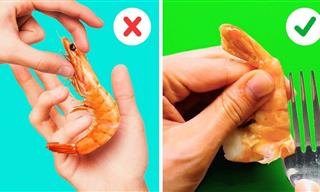 12:30
12:30
Learn How to Easily Peel 22 Kinds of Fruits and Veggies!
Peeling can be one of the most bothersome tasks in the kitchen. These 22 genius peeling hacks will make your life much easier.

Make Your Long Flight Comfortable with These 10 Tips
Got a long-haul flight coming up? Bear in mind these 10 essential tips.

With a Few Plants, You Can Have a Mosquito-Less Summer
Mosquitoes are a right nuisance and the available repellents are temporary and can be dangerous. Get these mosquito-repelling plants instead!
 14:05
14:05
33 Things You Never Knew Your Toothpaste Could Do
Your toothpaste is more versatile than you thought.
 7:59
7:59
These Are the 8 Healthiest Plants To Have In Your Home
Houseplants have health benefits, from cleaning the air around you to boosting your mood. Learn which ones are the healthiest to have around.

Senior Travel Made Simple: 10 Tips for a Better Trip
What can make travel a bit easier for seniors? Read on to find out…

This is How You Can Stop Your Partner's Snores
Does your partner keep you awake at night with their annoying snoring? If the answer is yes, this guide is just what you're after.
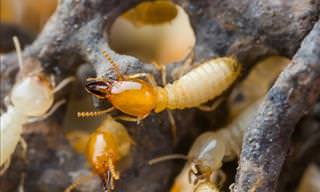
7 Chemical-Free Ways to Rid Your House of Termites
Termites can cause a lot of destruction, but luckily there are chemical-free ways to get rid of them. Here are 7 of them:
 3:13
3:13
Tips and Tricks to Help You Choose the Freshest Vegetables
With the help of these science-based tricks, you will only choose the best vegetables at the supermarket to bring back home.

The Best AAA Membership Discounts You Haven't Been Using
Most people don’t know about these AAA benefits.

I've Used these Tips to Save Hundreds on My Groceries
Take a look at the following tips that I have used in recent months, to help me save hundreds of dollars on my groceries.

Say Goodbye to Armpit Stains with This Natural Deodorant
Naturally remove armpit stains with this effective remedy.
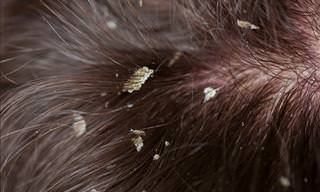
Do You Have Dandruff? Here's How to Get Rid of It!
Do you suffer from dandruff? If so, instead of buying expensive shampoos, try these 8 natural remedies instead!

9 Ingenious Q-Tip Hacks for Surprising Daily Uses
We bet you never thought cotton swabs could be so handy around the house!

Don't Delay, You Need to Start Cleaning These Items Today!
Do you know how many different things need to be cleaned every day in your home? Here are 9 household items you might be neglecting.

If You Meet an Aggressive Dog, Here is What You Do...
If you are ever approached by an aggressive dog, these tips might just save your life.

Stop Your Pipes From Freezing with This Simple Hack
Don't let your pipes freeze this winter! Here's how to go about it.

Here’s How to Learn a Language from Scratch for All Ages
Here are 4 effective and fun techniques that will help you learn new words in a new language fast and forever.

The Smart Weight-Loss Tips No One Ever Told You
These simple daily changes can bring an avalanche of goodness to your body. I'm sure you've never heard at least half of these tips, but each and every one of them will have a small and meaningful effect on your weight loss.

Debunking 8 Common Misconceptions About Taxes
Let’s break down eight of the most common tax myths and clear up the confusion once and for all.
 7:52
7:52
Everybody Should Know How to Tie These 9 Knots
Knowing how to tie different kinds of knots is a very useful and important skill. Learn how to tie these 9 most common knots with this video tutorial.

Stop Swiping Your Credit Cards! It's No Longer Safe
EMV is changing the way we use pay at the checkout. It's also making swiping your credit card a very dangerous thing to do. Here's why you should stop.
 8:03
8:03
DIY: Hidden Compartments and Secret Safes for Your Home
Here's a fun and brilliant video on how to make your own secret safes to hide your valuables, using only items found at home.
 2:15
2:15
How to Win at Every Tic Tac Toe Game...
Unlock the secrets to mastering Tic Tac Toe with our latest video guide.
 7:40
7:40
This Changes Everything You Know About Dishwashers!
These tips will change the way you approach dishwashing forever!

Here's How Often You Should Be Cleaning Home Essentials
We need to clean things in our home regularly in order for us to maintain them and ensure good hygiene. This guide will show you exactly how often you should.

The 5-Hour Rule: Successful People’s Best Kept Secret
While many want for success, few are able to achieve it. This 5-hour rule will help get you on the right track!
To enable your Ad-Free Subscription, please fill the fields below
Your subscription was successful, now you can enjoy an ad-free experience!!
Note: To make sure you get no ads, please make sure to log in to your account. If you are logged in already, then refresh the page. The subscription can be cancelled at any time.


